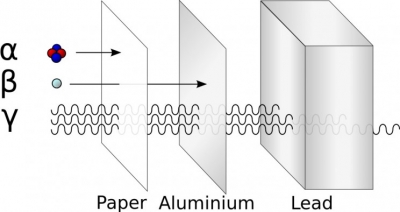
In recognition of the increasing importance of science, the University of Cambridge had recently changed its rules to allow graduates of other institutions to earn a Cambridge degree after two years of study and completion of an acceptable research project. Rutherford became the school’s first research student. Besides showing that an oscillatory discharge would magnetize iron, which happened already to be known, Rutherford determined that a magnetized needle lost some of its magnetization in a magnetic field produced by an alternating current. This made the needle a detector of electromagnetic waves, a phenomenon that had only recently been discovered. In 1864 the Scottish physicist James Clerk Maxwell had predicted the existence of such waves, and between 1885 and 1889 the German physicist Heinrich Hertz had detected them in experiments in his laboratory. Rutherford’s apparatus for detecting electromagnetic waves, or radio waves, was simpler and had commercial potential. He spent the next year in the Cavendish Laboratory increasing the range and sensitivity of his device, which could receive signals from half a mile away. However, Rutherford lacked the intercontinental vision and entrepreneurial skills of the Italian inventor Guglielmo Marconi, who invented the wireless telegraph in 1896.
X-rays were discovered in Germany by physicist Wilhelm Conrad Rontgen only a few months after Rutherford arrived at the Cavendish. For their ability to take silhouette photographs of the bones in a living hand, X-rays were fascinating to scientists and laypeople alike. In particular, scientists wished to learn their properties and what they were. Rutherford could not decline the honour of Thomson’s invitation to collaborate on an investigation of the way in which X-rays changed the conductivity of gases. This yielded a classic paper on ionization—the breaking of atoms or molecules into positive and negative parts (ions)—and the charged particles’ attraction to electrodes of the opposite polarity.
Thomson then studied the charge-to-mass ratio of the most common ion, which later was called the electron, while Rutherford pursued other radiations that produced ions. Rutherford first looked at ultraviolet radiation and then at radiation emitted by uranium. (Uranium radiation was first detected in 1896 by the French physicist Henri Becquerel.) Placement of uranium near thin foils revealed to Rutherford that the radiation was more complex than previously thought: one type was easily absorbed or blocked by a very thin foil, but another type often penetrated the same thin foils. He named these radiation types alpha and beta, respectively, for simplicity. (It was later determined that the alpha particle is the same as the nucleus of an ordinary helium atom—consisting of two protons and two neutrons—and the beta particle is the same as an electron or its positive version, a positron.) For the next several years these radiations were of primary interest; later the radioactive elements, or radioelements, which were emitting radiation, enjoyed most of the scientific attention.
Credit : Britannica
Picture Credit : Google
Leave a Reply